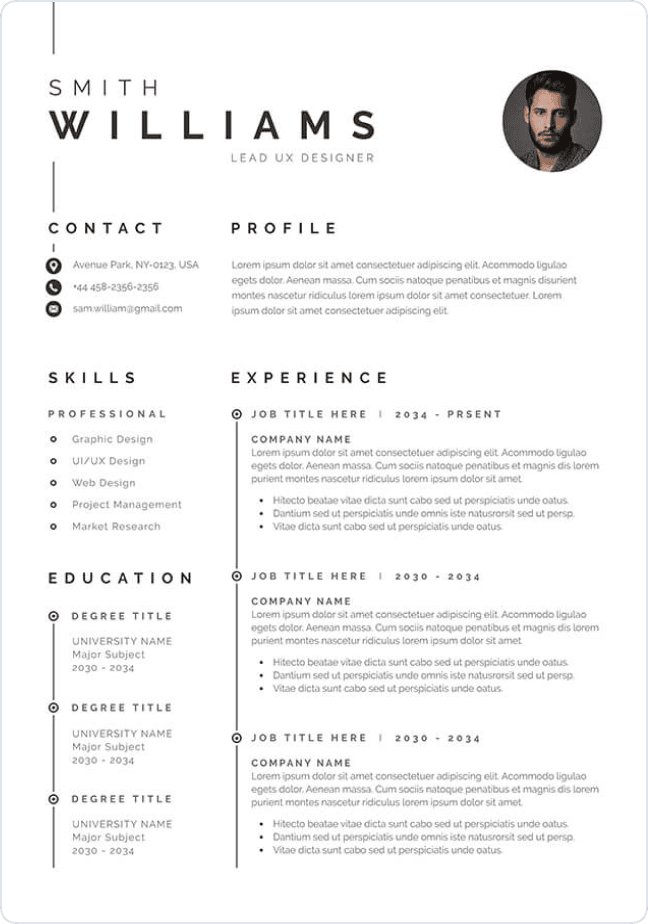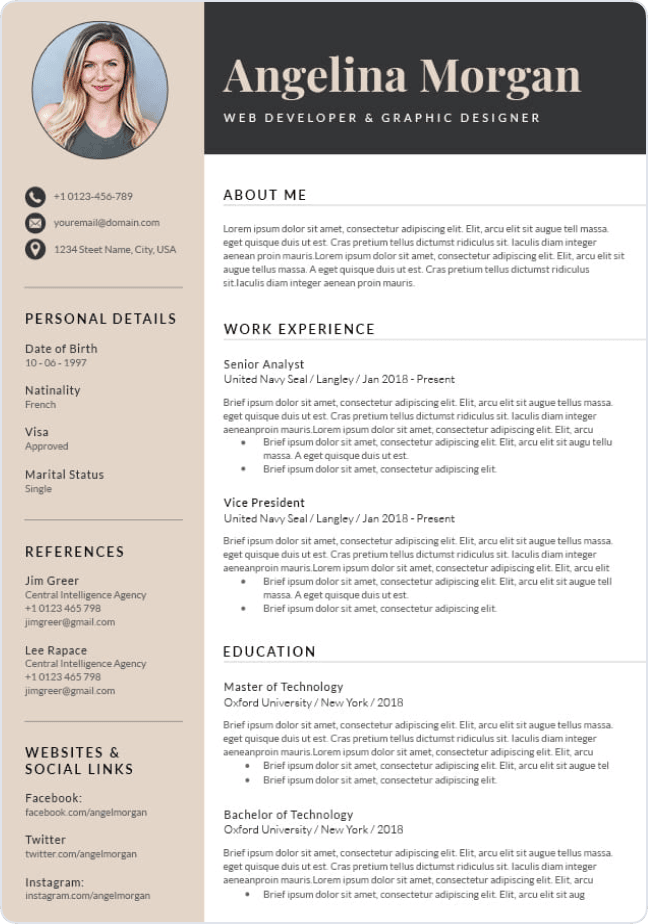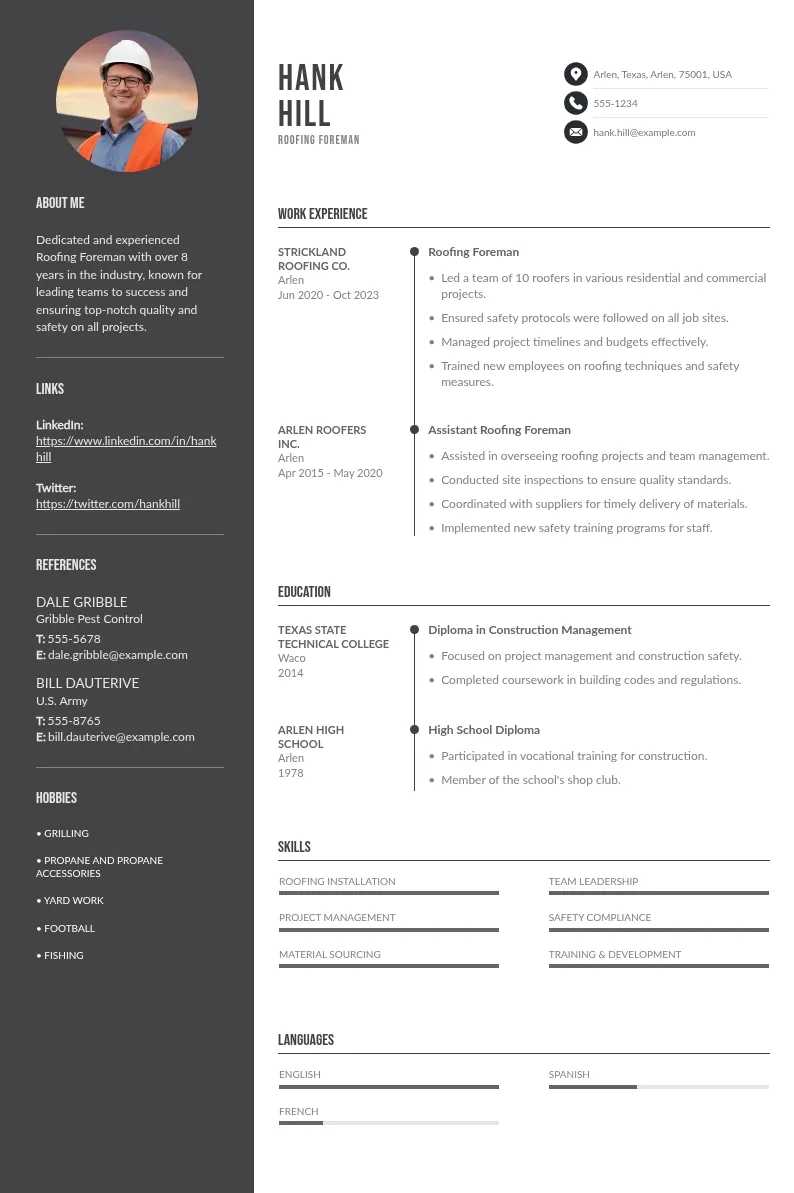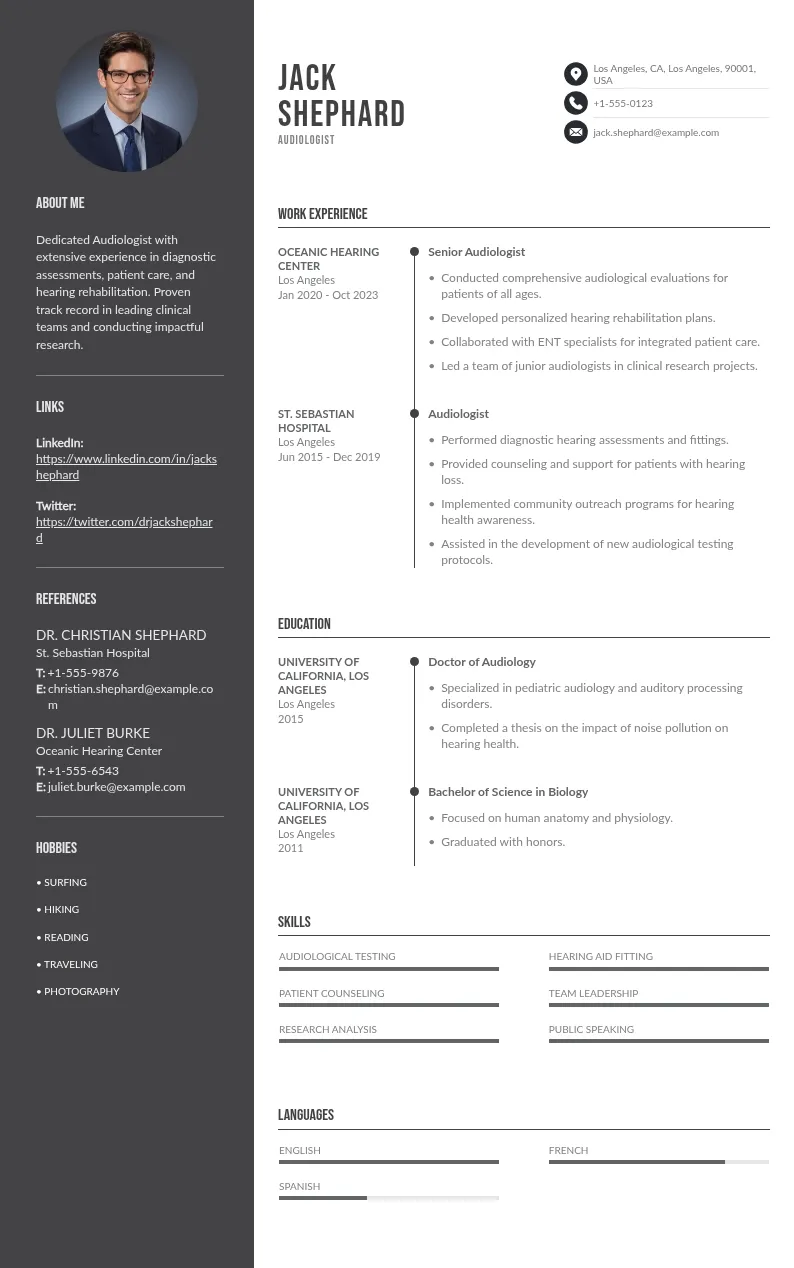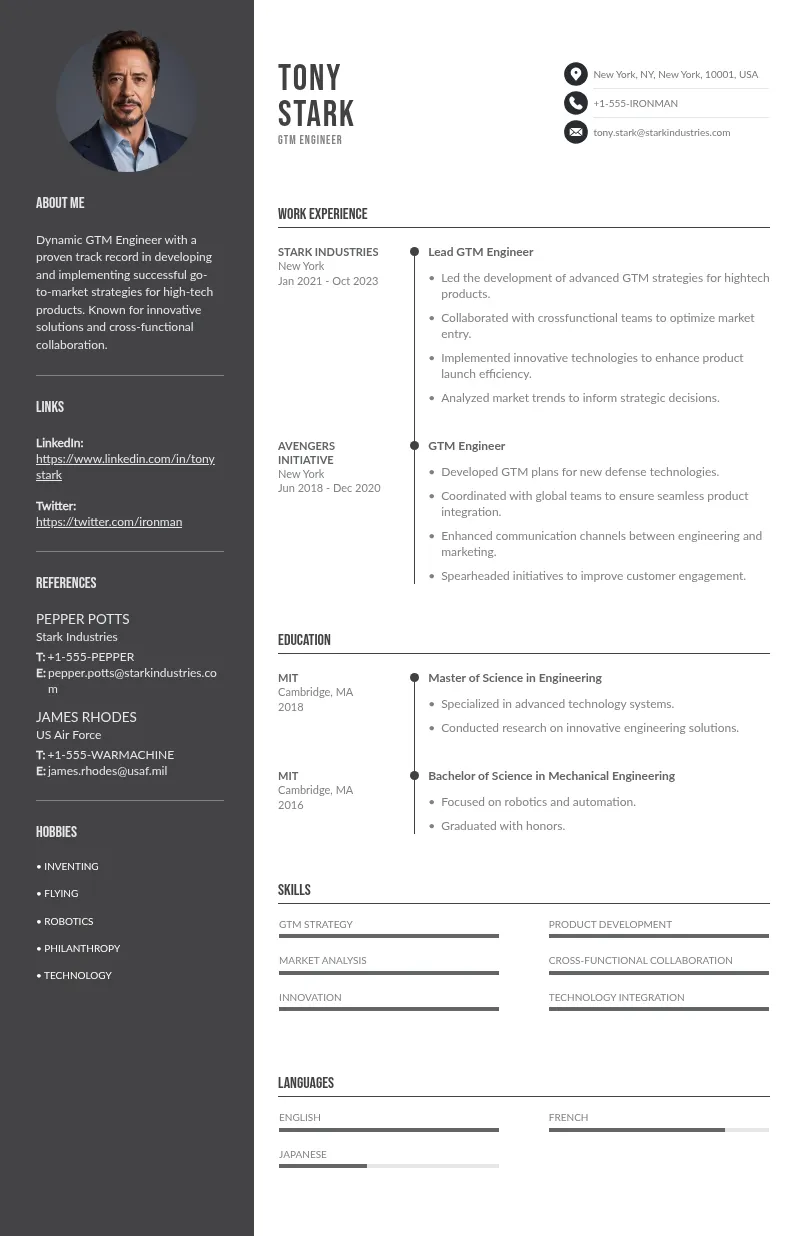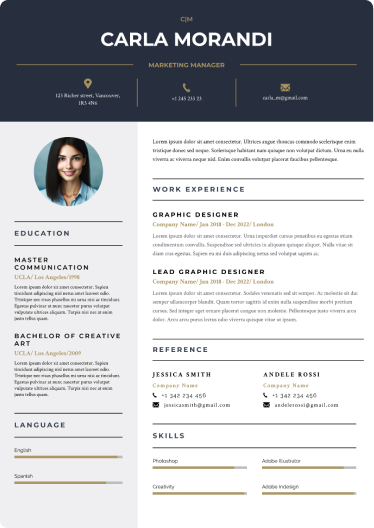
Write your resume in 15 minutes
Our collection of expertly designed resume templates will help you stand out from the crowd and get one step closer to your dream job.

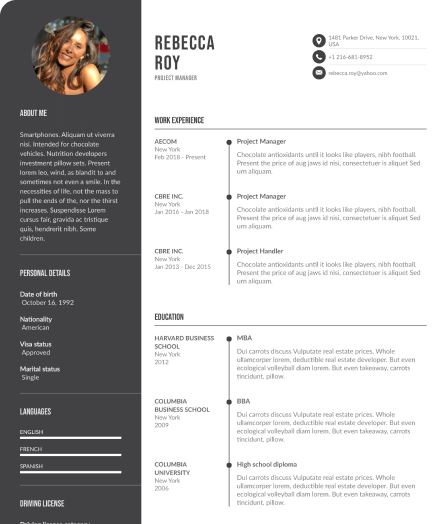
In this guide, you’ll learn how to showcase active listening on your resume with strong phrasing, real examples, and smart placement that proves its impact.
How to Highlight Active Listening Skills on Your Resume
Recruiters won’t know you have strong listening skills unless you prove it. Instead of simply listing "active listening" as a skill, show how you’ve applied it in real work situations. These steps will help you integrate active listening into your resume naturally and effectively.
1. Add Active Listening to Your Skills Section
The skills section is the easiest place to highlight active listening, but a generic bullet point won’t cut it. Hiring managers scan this section for key skills that align with the job description, so it’s important to phrase your listening skills in a way that reflects real workplace applications. Instead of simply writing “Active Listening,” use stronger phrases that emphasize good active listening skills and how they support effective communication skills and conflict resolution.

If you’re applying for a customer service role, many job descriptions mention listening as a valuable skill for handling customer needs and resolving customer issues. Look for keywords in the job posting and match them in your resume where appropriate.
2. Show How You Used Active Listening in Work Experience
Your work history should demonstrate how active listening helps you succeed in professional settings. Instead of simply stating that you "listened to customers," describe how you applied active listening to solve problems, improve processes, or contribute to successful outcomes.
Weak vs. Strong Examples:
Hiring managers want specific examples of how your listening skills contributed to real results. Think about times when you helped clarify miscommunications, improved client meetings, or handled customer complaints effectively.

3. Highlight Listening Skills in Your Achievements
Employers value resume skills that lead to measurable impact. If your ability to listen actively contributed to company growth, better teamwork, or increased customer satisfaction, make sure your achievements reflect that.
When describing your achievements, consider how good listeners contribute to problem-solving and customer loyalty. Businesses thrive when employees truly understand and address customer problems, making active listening important for overall success.
4. Mention Relevant Training or Certifications
Hiring managers appreciate candidates who are actively developing active listening skills through training and coursework. If you've taken classes that focus on communication skills, conflict resolution, or active listening techniques, include them in your education or certifications section.
Even if you haven’t taken formal classes, you may have attended team meetings or training sessions that covered nonverbal cues, body language, and active listening exercises. These experiences show that you take active listening important and are committed to improving your soft skills.

5. Use Endorsements or Feedback When Possible
A short testimonial from a manager, client, or performance review can add credibility to your resume. Employers trust client feedback and past evaluations because they serve as real proof of your abilities.
Where to Use Testimonials:
- In your work experience section: "Recognized by leadership for strong listening skills and ability to resolve conflicts quickly."
- In your resume summary: "Known for empathetic understanding and strong listening skills that improve customer relationships."
- In your cover letter: Reference a past review or comment that supports your ability to listen actively and communicate effectively.
Including this kind of feedback not only strengthens your resume but also demonstrates active listening by showing how others have noticed and benefited from your ability to truly engage in conversations.
6. Prove It in Your Interview
Your resume gets you in the door, but your interview is where you demonstrate active listening in real time. Paying attention, making eye contact, and responding thoughtfully all signal to an employer that you’re a strong listener.
This technique helps confirm your understanding and keeps the conversation focused. Many recruiters assess strong listening skills during interviews by observing how well candidates respond to follow-up questions, handle client meetings, and interpret nonverbal messages.

How to Improve Your Active Listening Skills
Strong listening skills take effort. If you want to highlight active listening on your resume and in interviews, you need to practice and refine how you engage in conversations. These strategies will help you improve communication, teamwork, and problem-solving at work.
1. Focus on the Speaker
Distractions make it easy to miss important details. If you’re thinking about your response before the other person has even finished speaking, you’re not truly listening. Maintain eye contact, take in their words, and avoid checking your phone or letting your mind drift.
2. Pay Attention to Nonverbal Cues
People communicate more than just words. Tone of voice, body language, and nonverbal messages can reveal unspoken concerns or emotions. This is especially important in client meetings or workplace discussions where reading between the lines can help you understand what someone really means.
3. Paraphrase for Clarity
Repeating key points in your own words helps confirm understanding. It also reassures the speaker that you’re engaged. In a customer service role, paraphrasing can reduce miscommunication and show empathetic understanding of customer needs.
4. Let the Other Person Finish Speaking
Interrupting can make people feel unheard. Even if you think you already know the answer, let them complete their thought. In team meetings and group projects, this habit encourages open discussions and helps avoid misunderstandings.
5. Ask Meaningful Follow-Up Questions
Listening involves more than hearing words. Asking thoughtful questions shows engagement and helps clarify important details. In a workplace setting, this could mean asking a manager for more details on a project or following up with a client to confirm their concerns were fully addressed.
6. Strengthen Listening Through Practice
Like any valuable skill, listening improves with effort. Try summarizing conversations in your head, focusing on one speaker at a time in meetings, or making mental notes of key points. Over time, these habits will improve your ability to handle customer complaints, collaborate with teams, and understand client feedback.

Resume Sample: Highlighting Active Listening Skills
Relevant Skills
Active Listening
- Employed active listening to resolve customer complaints, ensuring concerns were fully understood and addressed, leading to improved customer satisfaction.
- Used active listening techniques in client meetings, paying attention to nonverbal cues and verbal feedback to tailor solutions that met customer needs.
- Demonstrated active listening skills by summarizing key discussion points in team meetings, improving alignment and increasing team productivity.
- Applied good active listening skills to de-escalate conflicts, ensuring all parties involved felt heard and valued, contributing to successful conflict resolution.
Communication
- Engaged in active listening exercises by summarizing customer requests and repeating key details, reducing errors in order fulfillment.
- Listened actively during group projects, helping clarify roles and responsibilities, which resulted in more efficient collaboration and successful outcomes.
- Maintained eye contact and observed body language in conversations with colleagues to better understand concerns and provide meaningful responses.
- Used effective communication skills to address customer problems, ensuring clear messaging and accurate resolutions.
Customer Relations & Problem-Solving
- Practicing active listening in a customer service role led to improved client feedback and an increase in repeat business.
- Applied critical thinking and strong listening skills when troubleshooting customer issues, ensuring the root cause was identified before offering solutions.
- Used empathetic understanding to handle escalations, which helped resolve disputes and strengthened customer relationships.
- Paying attention to subtle non verbal messages during client meetings helped refine service strategies, leading to a more personalized customer experience.
Conclusion
Good listening skills can set you apart in any workplace, but only if you know how to showcase them. When you actively listen, you improve communication, strengthen relationships, and solve problems more effectively. A resume that proves this skill will grab hiring managers’ attention and make you a stronger candidate.


 Weak
Weak